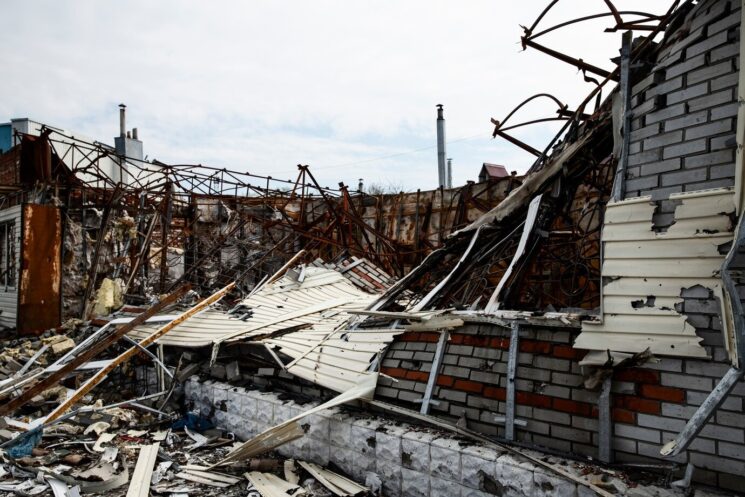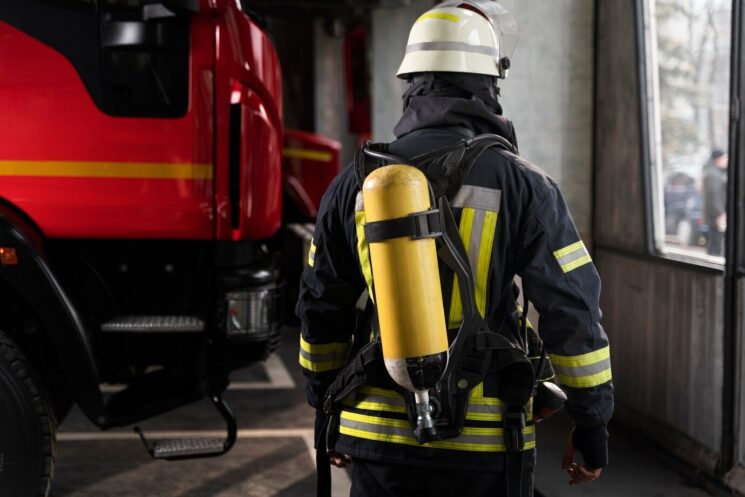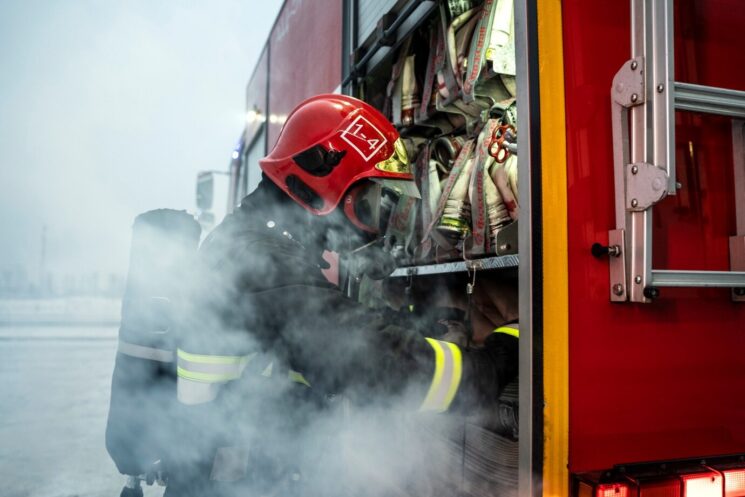Firefighters are the unsung heroes who put their lives on the line to protect communities from the destructive force of fires. Their job is fraught with peril, and every call to action involves confronting various risks. While the public often perceives firefighting as a noble and heroic profession, it’s essential to acknowledge the inherent dangers that come with the territory.
According to Statista, every year, between 60 and 100 firefighters die on duty in the US. Hundreds of firefighters are also injured every year.
In this article, we will explore a few on-job risks that firefighters must grapple with as they undertake their vital duties.
In This Post
1. Structural Collapse

Just recently, WXLV ABC 45 reported that six firefighters were injured after a structural collapse in Burlington. The firefighters were involved in a rescue operation inside a building. During the operation, the building ended up collapsing.
When battling a blaze, the intense heat can compromise the structural integrity of a building, making it susceptible to collapse. Firefighters often rush into burning structures to rescue individuals or extinguish flames, placing themselves at risk of being trapped beneath falling debris.
In addition to the inherent instability of burning buildings, the use of water or other extinguishing agents can exacerbate the risk. Sudden temperature changes caused by water hitting hot surfaces may result in thermal shock, hastening structural failure.
Firefighters must constantly evaluate the environment and anticipate potential collapses to minimize the danger they face while executing their duties.
2. Smoke Inhalation and Toxic Exposure
While flames are the most visible aspect of a fire, the smoke produced can be just as deadly. Case in point – according to WebMD, the number one cause of death related to fires is not the fires themselves but smoke inhalation. Firefighters often find themselves surrounded by thick, toxic smoke that can lead to serious health issues.
The combustion of various materials within a structure releases a cocktail of toxic gasses and particles, including carbon monoxide, hydrogen cyanide, and particulate matter. Continuous exposure to these hazardous substances can have severe consequences, ranging from respiratory problems to long-term health issues.
Properly fitted and maintained respiratory protection equipment is vital for firefighters to shield themselves from the harmful effects of smoke inhalation. Regular training on the use of this equipment enables firefighters to navigate through perilous, smoke-filled environments more safely.
3. Toxic Firefighting Equipment

According to TorHoerman Law, the use of Aqueous Film Forming Foam (AFFF) firefighting foam or products has been known to cause cancer. The AFFF foam contains PFAS chemicals responsible for cancer. Several firefighters ended up developing cancer because of using this toxic firefighting foam.
The AFFF foam lawsuit was then filed against the product’s manufacturers. These lawsuits were filed to secure compensation for those affected by the product’s use. The AFFF lawsuits showcase the impact toxic firefighting equipment can have on firefighters.
Firefighters are already putting themselves in grave danger thanks to the nature of their work. The last thing they need is toxic equipment that makes their profession riskier. Therefore, proper evaluation regarding their equipment is needed before handing it over to them.
4. Burn Injuries
Firefighters are constantly at risk of sustaining burn injuries while battling blazes. The extreme temperatures generated by fires can cause severe burns, ranging from first-degree surface burns to life-threatening third-degree burns. Firefighters may also encounter unexpected flare-ups, flashovers, or explosions, intensifying the risk of burns.
Protective gear, including flame-resistant clothing, helmets, and gloves, serves as the first line of defense against burn injuries. However, the intense heat of a fire can still pose a threat, especially when coupled with the physical exertion of firefighting.
Rapid intervention and medical attention are crucial for mitigating the impact of burn injuries and promoting a swift recovery for firefighters.
5. Emotional and Mental Health Challenges
Beyond the physical dangers they face, firefighters also grapple with significant emotional and mental health challenges. Responding to emergencies involving loss of life or severe injuries can take a toll on the psychological well-being of firefighters. The stress of the job and the unpredictable nature of emergencies can lead to conditions such as PTSD and other mental health issues.
Recognizing the importance of mental health in firefighting is crucial for fostering resilience among firefighters. Departments should prioritize providing access to mental health resources, counseling services, and peer support programs.
6. Wildfire Challenges
Wildfires present formidable challenges for firefighters due to their unpredictable nature. Rapidly changing weather conditions can shift the fire’s path, making it challenging to control.
Specialized training is essential to equip them with the skills needed to combat wildfires effectively, including using wildfire-specific equipment and understanding fire behavior.
7. Chemical Hazards and Hazardous Materials

Firefighters often encounter chemical hazards and hazardous materials at industrial or hazardous materials incidents. These incidents can release dangerous chemicals, endangering both responders and the public.
Specialized training is crucial to safely manage chemical spills and hazmat situations. Understanding the risks associated with exposure to hazardous materials and employing appropriate protective measures are vital aspects of firefighter preparedness.
8. Search and Rescue Operations
In addition to firefighting, search and rescue operations are a significant part of a firefighter’s duties. These operations involve scenarios such as rescuing individuals from confined spaces, high-rise buildings, or vehicle accidents.
Each scenario comes with unique risks and challenges, demanding specialized training and equipment to ensure the safety of both victims and responders.
9. Equipment Reliability and Maintenance
Reliable equipment is the lifeline of firefighters. Malfunctions in critical equipment like hoses, breathing apparatus, or hydraulic tools can jeopardize their safety and mission success.
Proper maintenance practices and routine inspections are essential to prevent equipment failures during operations.
Summary
In summary, firefighters play a vital role in safeguarding communities from the destructive force of fires. However, their commitment to duty comes with inherent risks.
From structural collapses to toxic exposures and emotional stress, firefighters navigate a multifaceted landscape of dangers. Adequate training, the use of advanced safety equipment, and a holistic approach to firefighter well-being are essential elements in mitigating these risks.